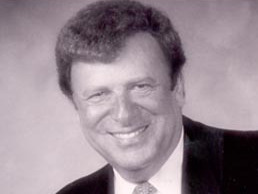 Year after year, legions of school children read and commit to memory Martin Luther King's "I have a Dream" speech. Many of them believe it is his most important work.
Year after year, legions of school children read and commit to memory Martin Luther King's "I have a Dream" speech. Many of them believe it is his most important work.
It's the speech he delivered during the March on Washington for Jobs and Freedom on August 28, 1963. King spoke in front of the Lincoln Memorial to about 250,000 people advocating racial harmony. King's speech is often recited on Martin Luther King Day, the government holiday used to reflect on his legacy.
The march was originally planned to dramatize the plight of blacks in the South. President Kennedy wanted King to change the focus of the march because he feared it would adversely impact passage of the Civil Rights Act. King refused.
A lightning rod for controversy, King had been arrested on Good Friday just five months earlier in Birmingham, Ala. after a peaceful protest against segregation. During his time in the city lockup, he wrote an open letter. It had to be smuggled out on scraps of paper by his supporters.
{sidebar id=13}King was not the first public figure to write a letter to followers while in jail. He joined notables that include the Apostle Paul, Mohondas K. Gandhi, South Africa's dissident Nelson Mandella, a German theologian, Dietrich Bonhoeffer, who was imprisoned by the Gestapo in World War II, and Catholic social activist Dorothy Day.
The letter is the most memorable writing of King, according to Dr. Herb London, a world-renown cultural critic and head of the Hudson Institute, a Washington think tank.
"He talks about how one deals with one's enemies," London said in an interview. "It's critical in understanding his ethos and the symbolism associated with the Martin Luther King celebration."
{sidebar id=14}"His attitude towards his enemies caused me to recall a true story that took place in Tennessee at the time of desegregation."
London said he believes the act of writing the letter forced King to think through his beliefs on civil disobedience. "He was an original thinker. He was obliged to address the issue of civil disobedience and he did it in that letter," London said.
London describes the incident:
"Before the first day of school under desegregation a white woman told her child that black children would be at school and were dangerous. She advised her child not to sit next to a black child. Similarly, a black woman told her child that white children would be mean to her, to expect difficulty and warned her not to sit next to a white child. It just so happens that the teacher sat the children next to each other alphabetically. As a result white and black children sat next to each other in adjoining desks.
"At the end of the day the black mother asked her daughter if she had sat next to a white child. She said that she was seated next to another student (who was white) and they were both scared and they held hands the whole day."
At that time in 1957, London was a Northern teenager participating in the Freedom Rider movement. Waves of volunteers from the north descended on the South to help register voters and organize protesters for non violent demonstrations. Before his arrival in Clinton, Tenn., the high school was the focus of violence, and a bitter campaign by a New Jersey white supremacist to stop desegregation. The school was bombed in 1958.
"I thought of it as a non- partisan activity," London recalled. "I don't recall feeling as if I was in danger."
King's missive wasn't published until three months after his Good Friday arrest. It was his answer to a letter and call for unity from eight white Birmingham preachers. The clergymen had urged King to wait until the courts had decided the issue of desegregation. The also accused him of inciting civil unrest.
In the letter King asserted that "Injustice anywhere is a threat to justice everywhere."
King also quoted Thurgood Marshall, then a lawyer for the NAACP, who later became the first black judge on the U.S. Supreme Court.
"Justice too long delayed is justice denied," Marshall said.



